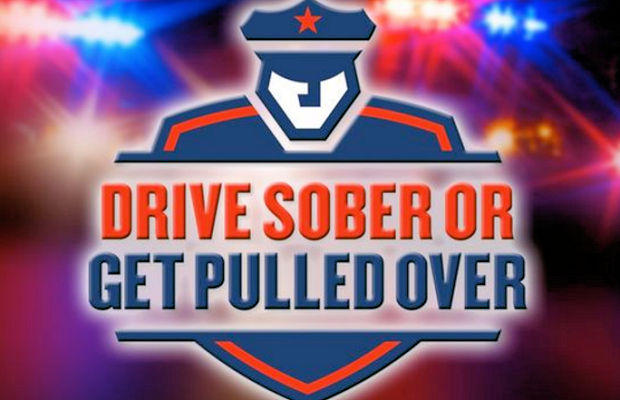The 2023 national enforcement mobilization “Drive Sober or Get Pulled Over” went into effect across the country on Aug. 16 and will conclude on Sept. 4, 2023. One of the deadliest and most often committed – yet preventable – of crimes (impaired driving), has become a serious safety epidemic in our country.
With the end of summer comes Labor Day weekend, which in years past has signaled one last trip to finish out the summer. As it turns out, this year does not look much different, despite the COVID-19 pandemic — except for the places Americans plan to travel. Given that many locations around the country have instituted a 14-day quarantine for new arrivals and some countries have banned Americans altogether, travelers are essentially opting for the locations that will have them. A study from Tripit comparing Labor Day air line bookings this year vs. last year shows that traditionally popular destinations have been replaced with warm-weather destinations that also happen to be pandemic hot spots.
Unfortunately, the holiday weekend also means an increase in road traffic, with many flocking to the beaches and to visit family and friends for the long weekend.
Increased traffic means an increased likelihood of vehicle crashes, and the festive nature of the weekend, unfortunately, lends itself to instances of drunk driving. To keep people safe on the streets, the U.S. Department of Transportation’s National Highway Traffic Safety Administration (NHTSA) wants to make sure this busy travel period is a safe one, which is why we’re partnering with law enforcement nationwide for the Drive Sober or Get Pulled Over enforcement campaign from August 21 through September 7, 2020, to help put a stop to alcohol-impaired driving.
https://www.nhtsa.gov/campaign/drive-sober-or-get-pulled-over
Labor Day Driving Trips from America’s Road Team
The first step towards a safe trip begins in the driveway.
- Do a "walk around" before leaving: Check your vehicle's tires, wipers, and fluids. Have your radiator and cooling system serviced.
- Plan ahead: Before you get on a highway, know your exit by name and number, and watch the signs for the exit as you near it. Drivers making unexpected lane changes to exit often cause accidents.
- Get a map or program your GPS: Surprisingly, few motorists use maps, even when driving through unfamiliar areas. Knowing the road is essential for safe driving -- it allows you to anticipate the road ahead and avoid a panicky search for directions.
- Leave early and avoid risks: Leave early so you won't be anxious about arriving late and to accommodate delays. Know your limitations: don't drive when tired, upset, or physically ill. Never try to gain a few seconds by attempting a risky maneuver.
- Be aware of trucks’ blindspots: When sharing the road with large trucks, be aware of their blind spots. If you can't see the truck driver in his or her mirrors, then the truck driver can't see you.
- Expect the unexpected: Look 1/4 mile ahead for a safe path. Leave yourself an out.
- Make sure your phone is connected to the Bluetooth of your vehicle and you are talking hands free. Limit cell phone use to a minimum and pull off to a designated parking area to use your cell phone if the call is going to be prolonged. Make sure you are NOT on your phone in work zones.
- Signal your intentions: To change lanes, signal ahead of time so other drivers can respond. If a truck is signaling to change lanes, allow it space to do so. Often, it is trying to avoid another vehicle.
- Do not cut in front of large trucks: Remember that trucks are heavier and take longer to make a complete stop, so avoid cutting quickly in front of them.
- Yield: On entrance ramps, remember highway traffic has the right of way; maintain proper speed, use smooth merging techniques, and don't slow down in front of a truck.
- Never stop on the highway: The most dangerous speed on a highway is zero. Stopped vehicles, even on the shoulder, create a severe hazard for themselves and others. If you are stopped for emergency purposes, understand that big trucks cannot always stop to assist you, but most will use their radios to contact the police or highway patrol if they see you are in trouble.
- Watch your gas gauge: To save fuel, take direct routes, minimize side trips, and keep a steady speed. Further, a well-tuned engine, properly inflated tires and reduced speed will result in noticeable fuel savings. Have at least a quarter of a tank of gas before you get on a highway. Traffic tie-ups can use a lot of fuel -- and may leave you stranded.
- Construction zone: Stay alert in work zones. Traffic may move more slowly, and lanes may be temporarily closed. Obey informational signs located within the work zone.
The America's Road Team would like to remind the motoring public that from driveway to highway, safety requires patience and dedication.
We are still in Road Construction Season!
Drivers need to be especially cautious of construction zones. States are making a concentrated effort to raise the awareness of the dangers in these zones. Here are some safety tips you can share with your drivers regarding construction zones:
- SLOW DOWN and be alert when approaching a “construction zone.” Get into the correct lane well in advance. Where traffic is merging into a single lane, be cautious of other motorists racing to get ahead of slowing traffic.
- Get OFF the phone…. even Hands-Free phones are distracting your ability to safely operate your truck
- PAY ATTENTION to what those orange and black warning signs are telling you to do.
- BE ALERT for the actions of other drivers.
- PAY CLOSE ATTENTION to construction equipment and workers. You never know their next move, so be prepared to stop.
- WATCH SPEED LIMITS and don’t tailgate. Double your following distance. Rear-end collisions are the most common kind of construction zone accident.
- WATCH FOR CONSTRUCTION VEHICLES entering and exiting the road in or near the construction area, as they may enter and exit at a slower speed than other traffic.
- TURN YOUR HEADLIGHTS ON as you approach a work-zone, alerting both the construction workers and other traffic around you of your presence.
- GIVE CONSTRUCTION WORKERS A BRAKE
House Members Introduce Bill to Rescind Entry-Level Driver Training Rule
Rep. Bob Good (R-VA) has introduced H.R. 4738, a bill to rescind the Federal Motor Carrier Safety Administration’s final rule on minimum training requirements for entry-level commercial motor vehicle drivers. The bill has 11 cosponsors.
Rep. Good cited the ongoing truck driver shortage as the impetus for introducing the legislation. In a statement, he said, “The ongoing trucker shortage impedes our local farmers and manufacturers from doing business with their communities, driving prices up for consumers across the country. With rising inflation and a job shortage . . ., the last thing Americans need is more regulatory overreach from bureaucrats in Washington.”
A similar bill was also introduced late in the last Congress but did not make it out of committee in the House.
DOT Inspector General Faults Timeliness of Compliance Reviews of Cross-Border Carriers
The U.S. Department of Transportation Inspector General has issued a report finding that the Federal Motor Carrier Safety Administration generally followed Federal regulations and its standard operating procedures and processes when provisionally authorizing and monitoring cross-border carriers’ long-haul operations in the United States from Canada or Mexico. But the report also noted that the FMCSA “did not always conduct timely compliance reviews of carriers operating under provisional authority, which hinders FMCSA’s ability to fully assess and mitigate carrier safety risks, resulting in increased risk that unsafe carriers may be operating on the Nation’s roadways.”
The report stated that Federal regulations require that FMCSA will conduct a compliance review on a Mexico-domiciled carrier within 18 months after the Agency issues provisional operating authority to that carrier. Among all carriers that received OP-1(MX) authority as of January 1, 2023, the Inspector General found that 5311 (64%) did not receive a compliance review within 18 months of receiving provisional operating authority. Thirty-eight of these 53 carriers had not received a compliance review at all after having had provisional authority for an average of over 40 months, with the longest for over 85 months. Further, the Inspector General found FMCSA had not conducted a compliance review of a cross-border carrier since January 2020.
On the other hand, according to FMCSA, Mexico-domiciled carriers’ safety performance is as good as or better than U.S. carriers. Based on the Inspector General’s review of the FMCSA’s safety data on vehicle and driver out-of-service rates for fiscal year 2022, OP-1(MX) carriers had a vehicle out-of-service rate under 15 percent in fiscal year 2022, compared with over 22 percent for U.S. carriers. Similarly, OP-1(MX) carriers had a driver out-of-service rate of under 1 percent in fiscal year 2022, compared with over 7 percent for U.S. carriers.









